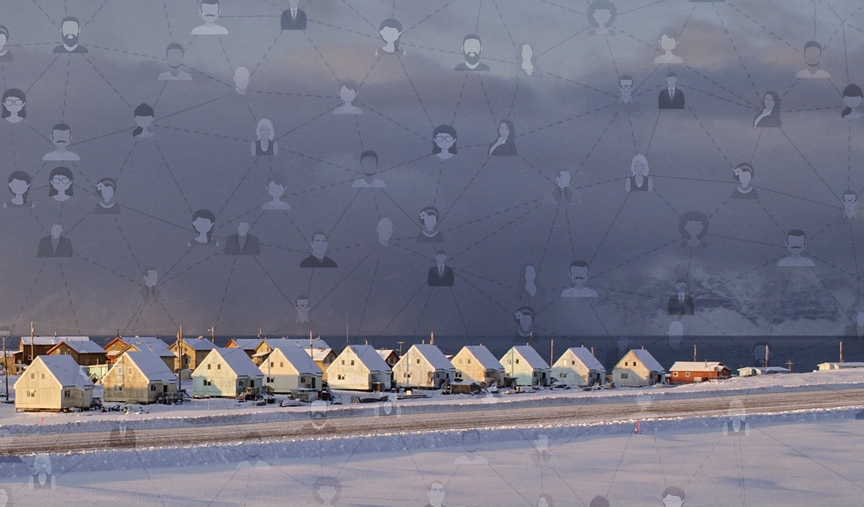
Huawei ventures North of 60
Mary Simon is a respected Inuit leader who represented Canada on the panel that negotiated the creation of the Arctic Council. She was invited to serve as a special advisor to the federal government as it formulates a comprehensive policy on the north. Her mandate focused on conservation goals, sustainable economic development and the social needs of remote Arctic communities. Her final report titled A New Shared Arctic Leadership Model was released on May 1, 2017 and incorporated input acquired from 65 engagement meetings involving 170 people and 34 written submissions.
Ms. Simon’s discussions with Arctic leaders made it clear that while there was a long list of physical and social infrastructure needs, it was the vision of “a leap forward in broadband that presented the most intriguing transformational ideas.” Fortunately, two earlier studies provide the springboard for implementation. The 2011 Arctic Communications Infrastructure Assessment Report compiled detailed maps of communications services available across the territories including gaps. The Arctic Economic Council’s 2016 Arctic Broadband: Recommendations for an Interconnected Arctic compares Canada to other circumpolar nations, and offers recommendations on available technologies and financing. Enter Huawei.
Company founder Ren Zhengfei started his enterprise to provide service to rural areas in China, making it a natural fit in the Canadian context. The federal government estimates that about 5.4 million people representing 15 per cent of the population do not currently have access to high-speed Internet. An article in Ottawa Life’s previous edition referred to this lack of service as being not only in northern or remote communities, but right here in the outlying regions of the nation’s capital. Head north and hope your house is in sight of a 3G tower. The situation prompted Pontiac MP Will Amos to put forth a Private Members’ motion (M-208) whose call for a government commitment to support the delivery of high-speed Internet to all Canadians as an essential service received rare unanimous support. The feds are committed to bringing high-speed Internet access into every home and community by 2031, and began with a budgetary pledge of $6 billion for connectivity upgrades, including $1.7 billion in new funding.
Huawei has been in Canada since 2008 and employs hundreds of people. Last year, the company invested $180 million into a new 5G-technology research and development facility in Ottawa. Earlier work in more southerly remote communities foreshadowed an announcement in July that Huawei Canada has received federal approval to expand satellite coverage to 70 communities in the Arctic and northern Québec with partners ICE Wireless and Iristel.
Huawei’s public affairs director, Christopher Pereira, takes great delight in blogging about his visit north of the tree line. Pereira, originally from Toronto, has spent more than half of his life in China, but the Canadian north has always “been a place that had been romantic and mysterious” in his mind. Chris describes a travel itinerary that most Canadians will never experience, a multi-flight series of giant hops in tiny aircraft that wearily touched down in Inuvik NWT. In Iqaluit, the only hotel in town was booked long before his departure. It was perhaps finding himself in an AirBnB 15 minutes out of town on Frobisher Bay where Pereira personally absorbed the scope of the challenge and the seriousness of the situation. “The moment you leave the town center, you lose all signal, not even 2G!” Pereira notes. “This means that when residents go hunting or fishing (which represents a significant proportion of their time), they are completely disconnected and unable to call for help if an emergency arises.”
Pereira sees the hurdles, so Huawei support services will bring “6 or 7 IT professionals from across the north to Markham in November for Train the Trainer sessions. We enable their tech people to return home and support their communities.”

Mary Simon has been on the airwaves since her report was released evangelizing for broadband as a means of improving overall standards of living. Current but very limited initiatives in telehealth and virtual classrooms “clearly demonstrate how increased broadband access improves learning opportunities and mental health services.” In an era of reconciliation, learning goes both ways. As mentioned previously, I was a researcher in many early virtual classroom programs, and can think of no more powerful lesson in climate change than to live stream a conversation from the shores of Frobisher Bay to southern schools.
It’s not often that the affairs of Canada’s Arctic make international headlines, but Huawei’s continuing commitment to bring 4G to northern communities has caught the attention of our neighbour. Huawei is one of the biggest suppliers of network backbone technology in the rural US, but splintering glaciers don’t trigger the Trump administration’s early warning system like the Chinese tech giant has, or, more generally, Russia and China’s interests in the circumpolar region. US critics see federal approval of Huawei’s collaboration with a northern telco and an Inuit development corporation as China’s foot slipping into Canada’s northern door before America has even had a chance to put on its mukluks. $30 trillion is the estimated value of untapped Arctic resources overall and Canada accounts for the biggest share.
Mike Pompeo’s laser-like focus on perceived threats by America’s rivals has him repeatedly refuting Canada’s claim over the Northwest Passage, ominously making our north America’s next economic conflict zone. Efforts from the search for and discovery of the Franklin expedition to the current government’s partnership with northern Huawei broadband can be read as an assertion of Canada’s sovereignty in the Arctic. Furthermore, Mr. Pompeo, the project was approved under the federal Security Review Program, which protects critical infrastructure and is overseen by the Communications Security Establishment, the Ministry of Public Safety and Global Affairs Canada.
Policy and politics notwithstanding, it is in the deliverables that a project is best evaluated. Canada is not alone in needing to bolster broadband Internet in remote regions, and current Huawei-supported projects elsewhere bear a curious resemblance to things north of 60. In 2017, the company unveiled RuralStar, a low-cost base station that provides Internet connection to villages in Africa. Remote communities have low populations and are often located in unfavourable environments. Harsh conditions from the hot, dusty terrains of Africa to the brutal temperatures of a polar vortex put sophisticated technology to the test.
Huawei might as well be operating on Mars (if it isn’t already!). Gear needs to be super durable. Towers in the Ottawa Valley get coated by every ice storm, but crews are located nearby and power is on site to effect repairs. That is not the scenario in the high Arctic where reliability is put to the test and alternative power supplies like solar is the norm. And considering challenging terrain, Huawei’s equipment services the base camp at Mount Everest.
They’ve delivered and are poised to deliver again in Canada’s high Arctic.













